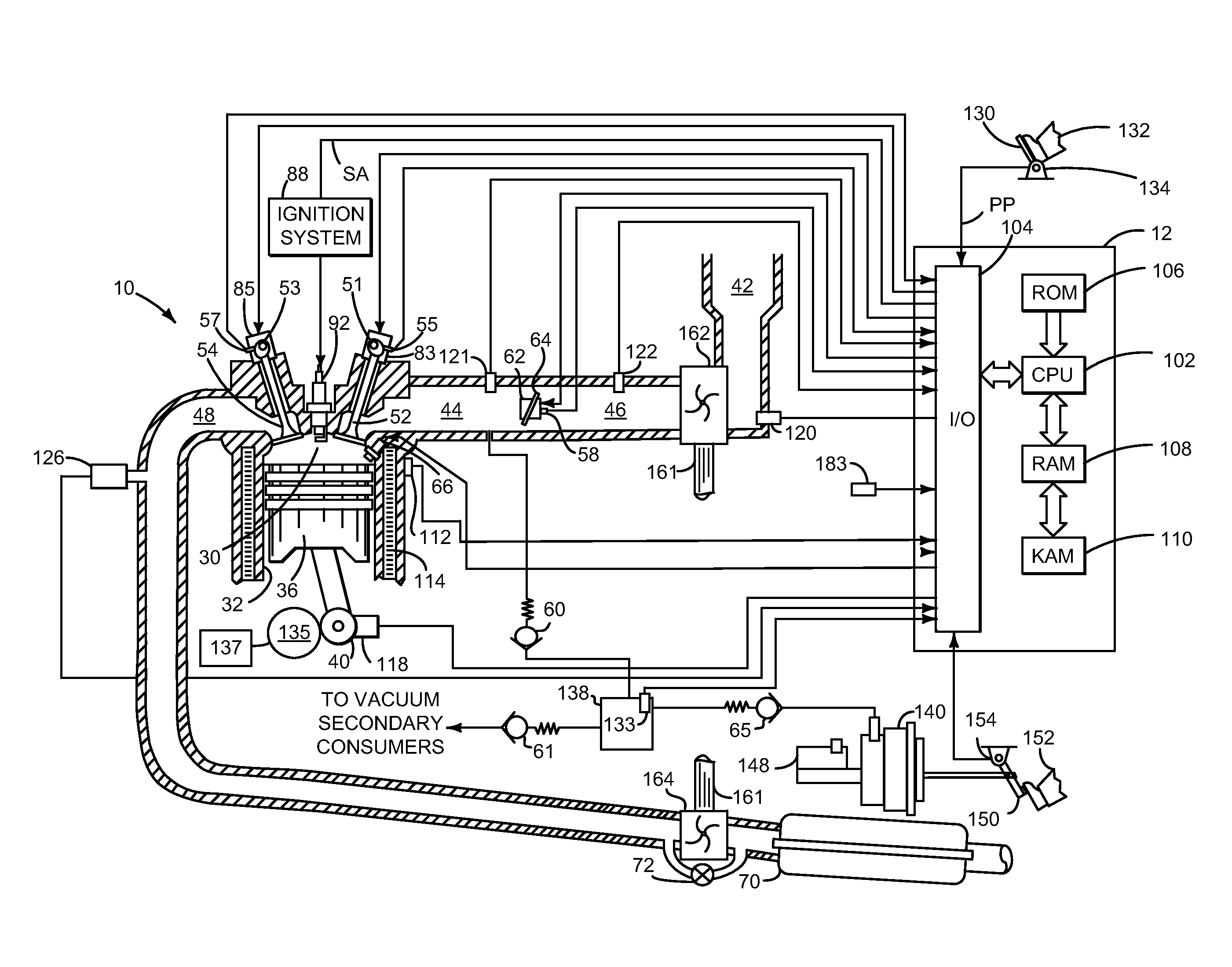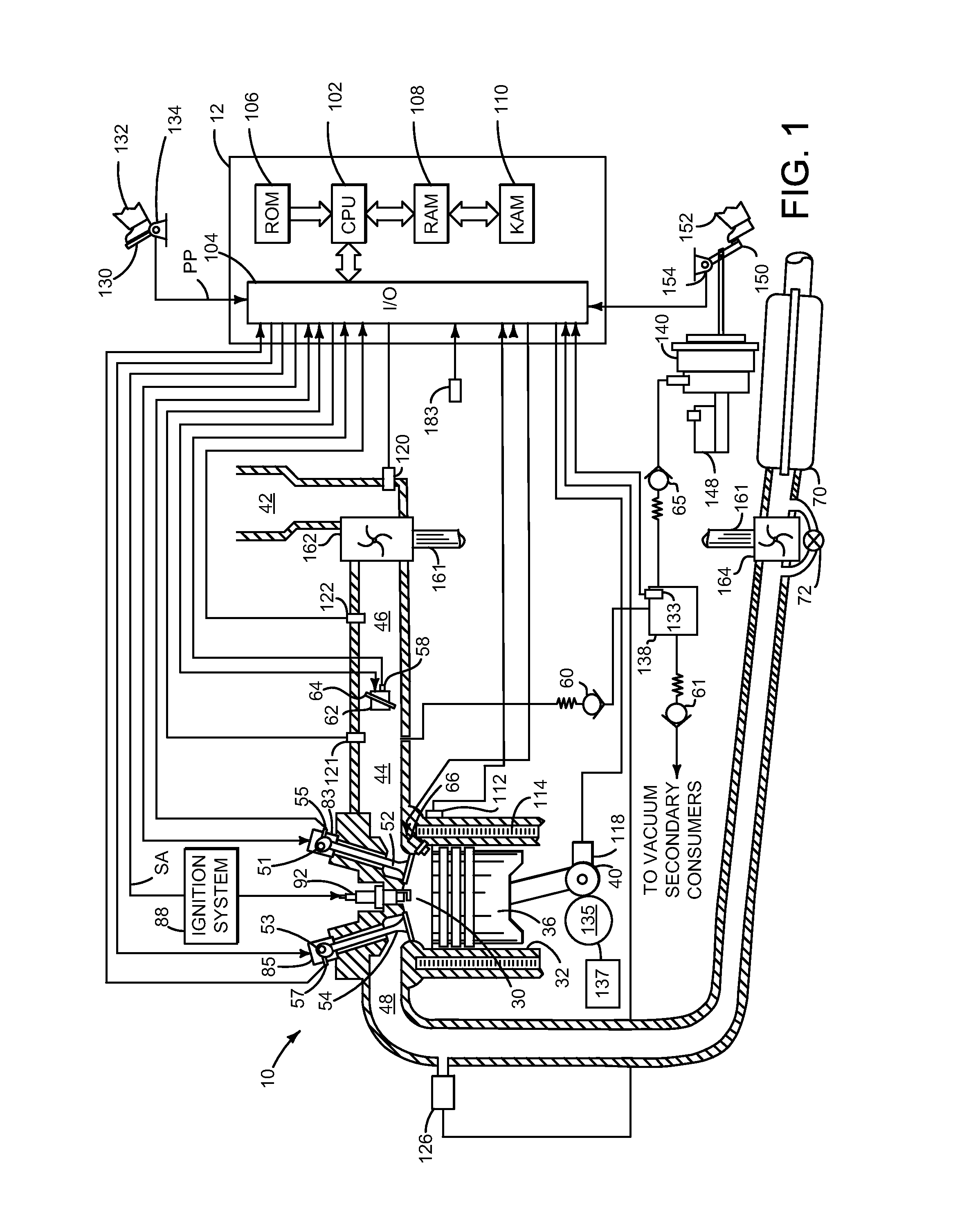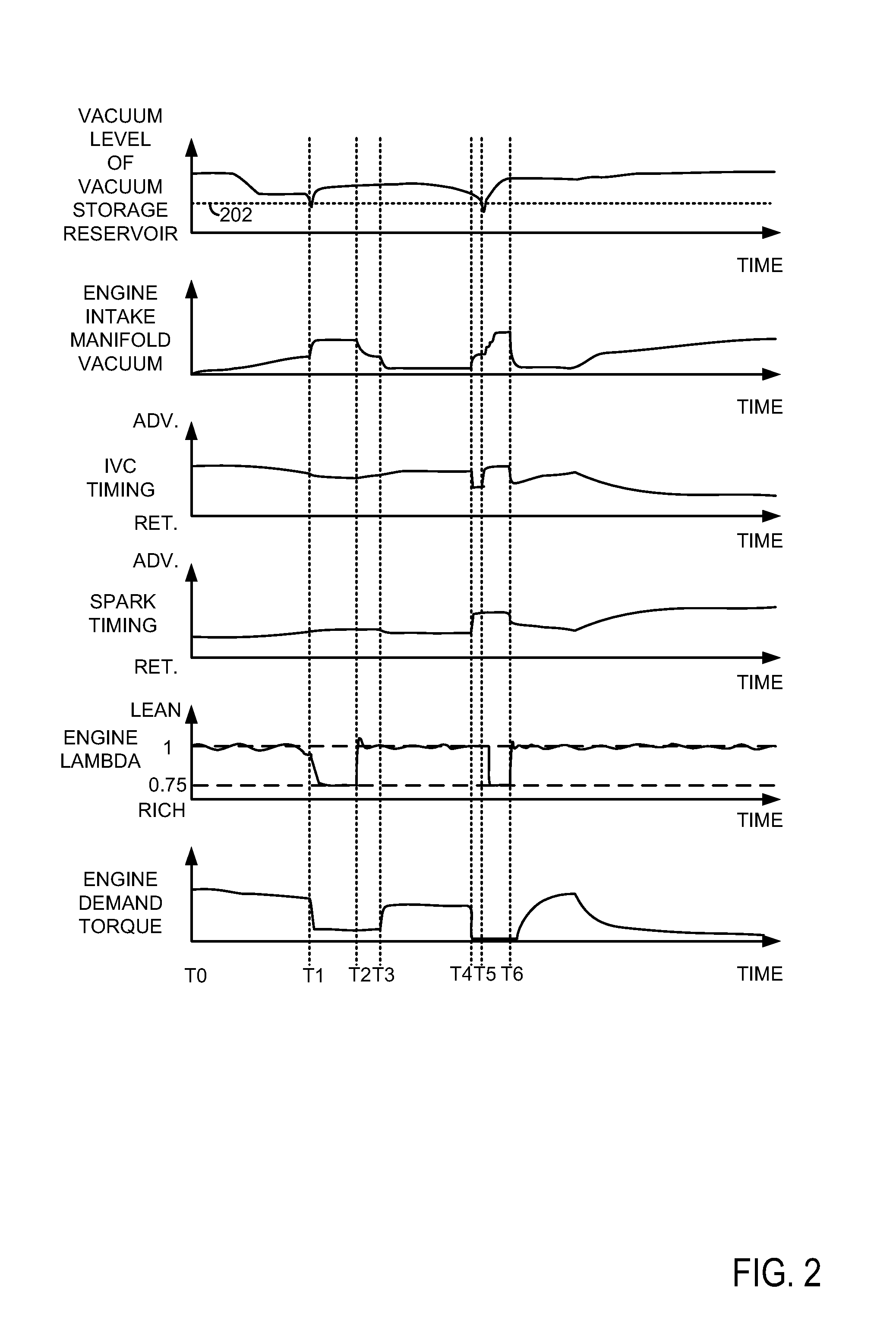Method for increasing vacuum production for a vehicle
a technology of vacuum production and vehicle, applied in the direction of electric control, combustion air/fuel air treatment, speed sensing governor, etc., can solve the problem of unable to provide the desired amount of vacuum at higher altitude, and achieve the effect of reducing engine emissions, sufficient vacuum, and preserving fuel
- Summary
- Abstract
- Description
- Claims
- Application Information
AI Technical Summary
Benefits of technology
Problems solved by technology
Method used
Image
Examples
Embodiment Construction
[0012]The present description is related to providing vacuum for vacuum consumers of a vehicle. In one non-limiting example, an engine as illustrated in FIG. 1 may be a source for generating vacuum used throughout the vehicle. FIG. 2 shows an example engine operating sequence according to the method of FIGS. 3 and 4. Vacuum may be provided to vacuum consumers of a vehicle according to the method of FIGS. 3 and 4.
[0013]Referring to FIG. 1, internal combustion engine 10, comprising a plurality of cylinders, one cylinder of which is shown in FIG. 1, is controlled by electronic engine controller 12. Engine 10 includes combustion chamber 30 and cylinder walls 32 with piston 36 positioned therein and connected to crankshaft 40. Combustion chamber 30 is shown communicating with intake manifold 44 and exhaust manifold 48 via respective intake valve 52 and exhaust valve 54. Each intake and exhaust valve may be operated by an intake cam 51 and an exhaust cam 53. The position of intake cam 51 ...
PUM
 Login to View More
Login to View More Abstract
Description
Claims
Application Information
 Login to View More
Login to View More - R&D
- Intellectual Property
- Life Sciences
- Materials
- Tech Scout
- Unparalleled Data Quality
- Higher Quality Content
- 60% Fewer Hallucinations
Browse by: Latest US Patents, China's latest patents, Technical Efficacy Thesaurus, Application Domain, Technology Topic, Popular Technical Reports.
© 2025 PatSnap. All rights reserved.Legal|Privacy policy|Modern Slavery Act Transparency Statement|Sitemap|About US| Contact US: help@patsnap.com



